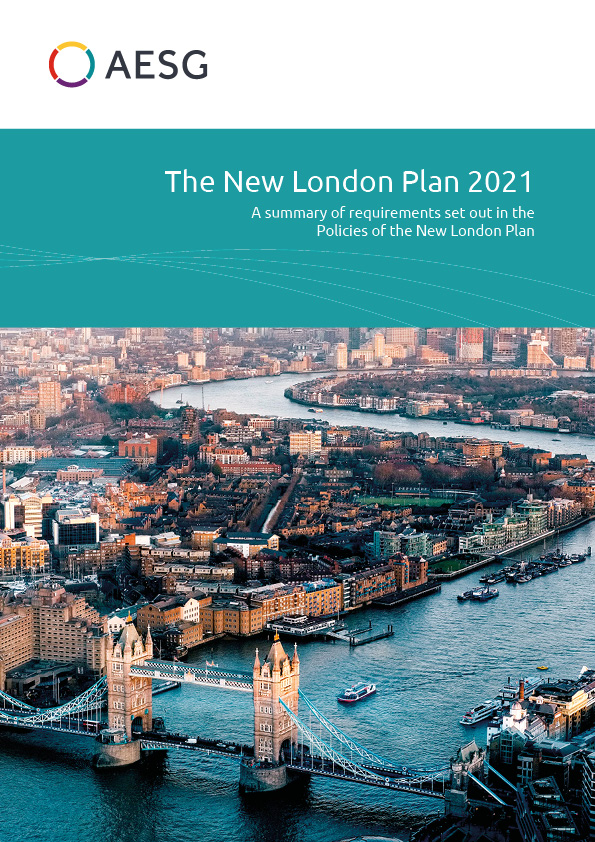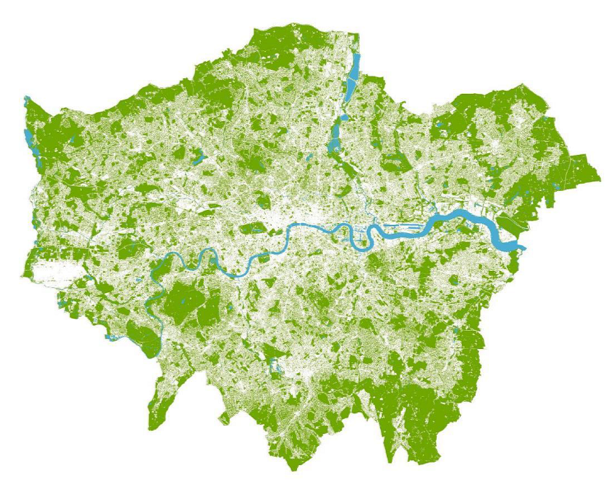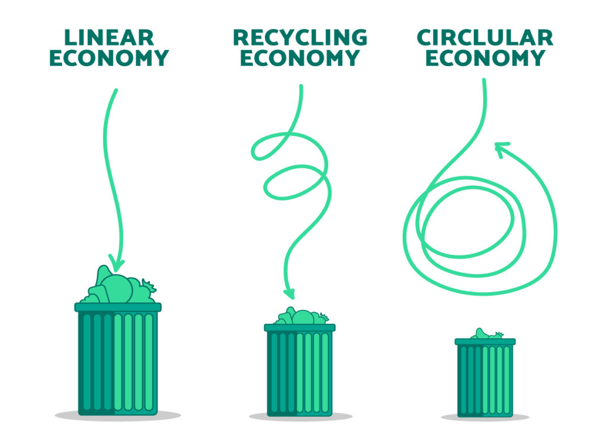
Introduction
The New London Plan (NLP) that came into force on the 2nd March 2021 is the latest spatial development strategy that must legally be taken into account when planning decisions are made in the Greater London Area.
Serving as a blueprint for sustainable and inclusive growth, the policies set out in the NLP will lead the way in tackling climate change, and make London a net-zero carbon city by 2050. In this way, it challenges the Built Environment to focus on strategically identified issues that will considerably impact future building design and operation.
This document provides a summary of key policies and their requirements for:
Air Quality
London fails to meet air quality requirements under legislation, making it a major issue. Having direct impacts on health, quality of life and life expectancy, the Mayor aims to make air quality in London the best of any major world city.
Preliminary Air Quality Assessments
All developments are required to submit a Preliminary Air Quality Assessment before project design that proves they will not contribute to air pollution. It should assess internal and external pollution sources including constraints imposed on the site, and design measures that will reduce exposure and improve air quality. This encourages projects to implement characteristics that design out pollution sources early on in the design process.
Air Quality Neutral and Air Quality Positive
All developments must be at least Air Quality Neutral, by ensuring acceptable air quality. If pollution cannot be reduced by on-site measures, off-site measures may be acceptable if equivalent air quality benefits can be demonstrated.
Masterplans and Large Scale Developments should seek to identify and deliver the greatest improvements to local air quality, aiming to achieve Air Quality Positive. This requires a holistic approach that may include reducing building and transport emissions, or planting trees. Specific measures to improve local conditions should be secured by Use of Planning Conditions or S106 Agreements, to ensure modelled parameters are achieved.
Construction and Demolition Pollution
Development proposals must also demonstrate how they plan to reduce emissions during demolition and construction, using best practice guidance that complies with the Non-Road Mobile Machinery Low Emission Zone.
Air Quality Action Plans
Air Quality Action Plans set out borough-specific actions. Developers must take these additional requirements into account, particularly in Air Quality Focus Areas that have high human exposure, and pollution exceeding the EU annual mean limit.
WHO Guidelines
The World Health Organisation (WHO) have implemented air quality guidelines. Projects should therefore monitor – at a minimum – levels of CO2, NOx and Particulate Matter (PM), implementing mitigation strategies if regulations are exceeded.
Policies and Guidelines
The above regulations have drawn on the following NLP policies: D3 Optimising site capacity through the design-led approach; D13 Agent of Change; SI1 Improving Air Quality.
Additional guidance can be found from: “The Control of Dust and Emissions During Construction and Demolition Supplementary Planning Guidance”.
Carbon Emissions and Energy Reduction
Reductions in carbon are key to the facilitation of climate change mitigation and to enable the creation of an adaptive city resilient to change. Subsequently, the UK has declared a new target to reach Net-Zero by 2050.
The Energy Hierarchy
New developments must inform their design, construction and operations using the Energy Hierarchy adding in an additional step ‘Be Seen’ to the previous 3-step approach:
Detailed Energy Strategy
To demonstrate how developments will meet the zero-carbon target (within the energy hierarchy framework) they must submit a detailed Energy Strategy that includes: estimated energy demand and associated emissions; use of energy-efficient design measures and zero or low-emission decentralized energy; reductions by secondary heat sources and on-site renewables and storage; how demand-side response and smart-meters will minimise peak demand; and plans to monitor and report to the GLA for at least 5 years post-construction. Major developments should also display a Display Energy Certificate (DEC).
Whole Life-Cycle Carbon Assessment
A new requirement is for major developments to conduct a Whole Life-Cycle Carbon Emission Assessment to capture anticipated emissions from operational, unregulated and embodied emissions, and emissions associated with maintenance, disposal, and demolition.
Offsetting
The NLP requires a minimum on-site overall emission reduction of 35% for major developments, with a separate 10% target for residential and 15% for non-residential developments through passive measures at the ‘Be Lean’ stage. Any residual carbon must be offset to achieve net zero.
This can be done either through cash in lieu contributions to borough-identified offset funds at a rate of £95/tonneCO2, or off-site carbon reduction measures (provided the alternative proposal is identified and delivery is certain).
Heat Networks
Heat Network Priority Areas (HNPAs) are areas in London where the heat density is sufficient for heat networks to provide a competitive solution to supplying heat. Developments in HNPAs should have a communal low-temperature heating system with a source selected in accordance with the Heating Hierarchy:
Policies and Guidelines
This section references: D3 Optimising site capacity through the design-led approach; SI2: Minimising Green House Gas Emissions; and SI3 Energy Infrastructure.
The following documents and standards can be used for further guidance: CIBSE/ADE Code of Practice CP1 or equivalent; and the London Heat Network Manual.

Figure 2: Components for Net Zero Carbon (LETI, 2019)
Green Infrastructure
Positively contributing to health, climate change adaptation and resilience, and biodiversity conservation, The Mayor of London commits to making London a National Park City by 2050.
Protect Green Areas
The NLP highlights the need to develop brownfield land, particularly in opportunity areas, whilst protecting and enhancing green spaces like the Green Belt, Metropolitan Land, Nature Conservation Sites, Open Space, and Trees and Woodlands.
The Urban Greening Factor
Major developments should include urban greening as a fundamental site element, incorporating high-quality landscaping measures such as trees, green roofs, green walls and nature-based sustainable drainage. The Urban Greening Factor identifies the appropriate amount of urban greening required. Whilst boroughs are able to tailor these to local circumstances, the Mayor has recommended 0.4 (amenity grassland) for residential developments and 0.3 (green roof of sedum or other) for commercial developments.
Net Biodiversity Gain
New developments should promote access to nature and manage impacts on biodiversity, particularly avoiding damage to significant ecological features. Utilising the best ecological information and addressing it from the start of the design process, projects must aim to secure net biodiversity gain, ultimately improving biodiversity of the site compared to before construction.
Policies and Guidelines
The following policies are referenced in this chapter: D3 Optimising site capacity through the design-led approach; G1 Green Infrastructure; G2 London’s Green Belt; G3 Metropolitan Open Land; G4 Open Space; G5 Urban Greening; G6 Biodiversity and Access to Nature; G7 Trees and woodlands
Additional guidance can be found in the Supplementary Planning Guidance on the All London Green Grid.

Figure 3: Green cover map for London (GLA, 2019)
Waste And The Circular Economy
Reducing waste, managing resources and developing a circular economy are key to sustainable development. Developments should aim to be net-zero waste.
Circular Economy Statement
Major developments are required to provide a Circular Economy Statement covering their whole life-cycle. It must demonstrate how design and construction measures will minimise material demand and enable material re-use at the end of their useful life. Anticipated waste needs during construction and operation must also be identified, coupled with waste management facilities providing adequate capacity. Key performance indicators that encourage circular, adaptable and flexible design must be used to monitor and report on project intent.
Minimum Recycling Requirements
Developments must be appropriately designed with accessible recycling systems, storage space and collection systems to facilitate the minimum recycling requirements of card, paper, mixed plastics, metals, glass and food.
Policies and Guidelines
The following policies have been referenced in this section: SI7 Reducing Waste and supporting the circular economy; SI8: Waste capacity and net waste self-sufficiency.
The London Waste Map can also be used for further guidance.

Figure 4: A Circular Economy (Compost Connect, 2021)
Fire and Life Safety
Large-scale fires remain a risk in London, posing a threat to life. It is essential that London develops as a safe and secure environment that is resilient against fire impacts.
Fire-resilient and Inclusive Design
For new developments including refurbishments, strategies to maximise building resilience and minimise physical risk of fires and related hazards must be considered at the beginning of the design process. This is essential to ensure they are inclusive, aesthetically integrated and do not conflict with security measures and means of escape – or access – of the fire and rescue service.
Additional policy requirements are in place to ensure safe and dignified emergency evacuation for all building users. For all developments where lifts are installed, a minimum of one lift per core is required that is suitably designed or evacuation of people who require level access from the building.
Fire Statement
Fire statements are stand alone documents – produced by a third party qualified assessor – that define the fire safety objectives and performance requirements of a development, and the methods by which these objectives will be provided/satisfied. All development proposals in London must be submitted with:
Fire statements must detail the following:
Fire Strategy
All projects must also submit a fire strategy demonstrating that the buildings design is compliant with the functional requirements of the Building Regulations. The information from the Fire Statement will be used to inform the overall fire strategy of the development, so consideration must be given to the accuracy and relevance of information used, to ensure the build is as per the design. A handover process for the passing of all relevant fire safety information contained within the fire strategy to the building owner should be planned and, where possible, outlined within the Fire Statement.
Policies and Guidelines
The following policies highlight this information on Fire and Life Safety: D5 Inclusive Design; D11 Safety, Security and Resilience to Emergency; D12 Fire Safety.
Further guidance, particularly related to the London Fire Statement, can be found in AESG’s ‘Fire Statements & The London Plan 2021’ document.

Figure 5: Fire Sprinkler System (Sinclair Fire, 2018)
Noise
Within the wider context of achieving sustainability, health and a good quality of life can be promoted by improving noise management and mitigation.
The Agent of Change Principle
The agent of change places the responsibility for mitigating the effects of noise and vibration on the new development, regardless of whether it is the source of the noise or vibration. Therefore developments must be designed sensitively to reduce these acoustic effects on occupants, particularly when planned close to noise- or vibration-generating activities.
Noise Impact Assessment
Planning applications should include a Noise Impact Assessment that identifies external and internal noise sources. It should include measures to minimise existing and potential adverse impacts of noise – from within, as a result of, or in the vicinity of new developments. Priority should be placed on separating noise-sensitive developments through distance screening, layout, orientation and uses. Where it is not possible to achieve separation, the project should implement sound insulation or technologies that reduce noise at the source.
Good Acoustic Design
Single aspect dwellings are more difficult to naturally ventilate and cool. Single aspect dwellings that are north facing, contain three or more bedrooms or are exposed to noise levels above which significant adverse effects on health and quality of life occur, should be avoided. Development proposals should include designs that reduce the impact of traffic noise on public realm, in line with the strategy for urban tranquility.
Tall buildings should be designed to not cause excessive noise created by air movements around the building, which could otherwise affect the comfort and enjoyment of open spaces around the building.
Passive ventilation should be prioritised, taking into account external noise and air quality in determining the most appropriate solution to overheating mitigation (see Approved Document O). Working alongside the dynamic thermal modelling required by energy strategies (or indeed using the Good Homes Alliance Overheating Tool if not available), the risk of adverse noise effects whilst controlling overheating can be evaluated using the Acoustics, Ventilation and Overheating Guide by the Association of Noise Consultants and the UK Institute of Acoustics.
Mitigation measures should be explored at an early stage in the design process, with necessary and appropriate provisions secured through planning obligations.
Policies and Guidelines
The following Policies have been considered in this section: D6 Housing quality and standards; D8 Public realm; D13 Agent of Change; D14 Noise.
Further guidance on managing and mitigating noise in developments is provided in: The London Environment Strategy; Approved Document O; BS 8223:2014; Pro:PG Planning and Noise (2017); The AVOG by the ANC and IOA; and BS4142.
Glossary
Agent of Change
A principle that places the responsibility for mitigating impacts on building users from internal and external sources on the new development.
Air Quality Action Plans
Borough-specific action plans to improve local air quality that planning decisions should be made in accordance with.
Air Quality Focus Areas
Locations that have poor air quality, exceed the EU annual mean limit value for nitrogen oxide and have high human exposure.
Air Quality Neutral
Developments that do not reduce local air quality, that is a minimum requirement for all developments.
Air Quality Positive
Developments that contribute to enhanced local air quality. This is the aim for masterplans and large developments.
Circular Economy Statement
A demonstration of how a development ensures materials are retailed in use at their highest value for as long as possible and then reused or recycled, leaving a minimum of residual waste. Required for all new developments.
Display Energy Certificates (DECs)
Records of actual energy usage, introduced by the EU in response to the Energy Performance of Buildings Directive.
Embodied Emissions
Emissions associated with raw material extraction, manufacture and transport of building materials and construction.
Energy Hierarchy
Prioritises solutions to assist progress towards sustainable energy systems. It must be used to inform design, construction and operations of new developments.
Energy Strategy
An action plan to manage the supply, procurement, cost and efficiency of energy across all areas of a development – required for all development proposals.
Fire Statement
A fire strategy produced by a third party suitably qualified assessor that details how the proposal will function in terms of fire and life safety. It is required for all new developments and refurbishments.
Heating Hierarchy
Prioritises solutions to assist progress towards sustainable heating systems that must be followed in Heat Network Priority Areas.
Heat Network Priority Areas (HNPAs)
Areas in London where the heat density is sufficient for heat networks to provide a competitive solution to supplying heat.
Net Biodiversity Gain
An approach to development that leaves biodiversity in a better state than before.
Noise Impact Assessment
An assessment of noise impacts and mitigation measures required to accompany planning applications, that are tailored to local circumstances and fit for purpose. It is required for all new developments.
Non-Road Mobile Machinery Low Emission Zone
A charging zone for Non-Road Mobile Machinery that do not meet emissions standards
Offset Funds
Investments that contribute towards financing energy efficiency measures and renewable energy technologies.
Preliminary Air Quality Assessment
An assessment that proves a development will not contribute towards air pollution, required for all developments.
S106 Agreements
Legal agreements between authorities and developers linked to planning permissions and planning obligations.
Unregulated Emissions
Emissions associated with cooking and small appliances.
Urban Greening Factor
A land-use planning tool to help determine the amount of greening required in new developments.
Use of Planning Conditions
Conditions that enhance the quality of developments by mitigating adverse effects, enabling a development to proceed where they would otherwise have been refused.
Whole Life-Cycle Carbon Emission Assessment
An assessment that indicates the total greenhouse gas emissions arising from a development over its lifetime from the emissions associated with raw material extraction, the manufacture and transport of building materials, to installation/construction, operation, maintenance and eventual material disposal. This is required for all developments.
How can AESG help?
AESG is a specialist consultancy, engineering and advisory firm headquartered in London, Dubai, Riyadh and Singapore working on projects throughout Europe, Asia and Middle East. We pride ourselves as industry leaders in each of the services that we offer. We have one of the largest dedicated teams with decades of cumulative experience in sustainable design, fire and life safety, façade engineering, commissioning, data management for the built environment, waste management, environmental consultancy, acoustics, strategy and advisory and carbon management.

Sustainability Consultant, AESG
Sofi is a dynamic Sustainability Consultant with a Master in Energy, Technology and Climate Policy, and a Bachelor in Geophysics from UCL. She has a passion for solving global complex problems, demonstrated by a history of consulting internationally recognised organisations on net zero carbon, building performance, nature conservation, disaster risk resilience and sustainable investing.
With a deep, holistic understanding of regulatory enforcement and climate change mitigation, Sofi conducts complex carbon footprint analyses and works closely with her clients to deliver successful decarbonisation strategies and net zero roadmaps.
She has also conducted courses in sustainable building design and holds a particular interest in health and wellbeing in buildings. Sofi manages and supports projects to achieve Net-Zero, WELL, LEED, BREEAM, Estidama and GSAS certifications.
For further information relating to specialist consultancy engineering services, feel free to contact us
References and Further Reading
AESG, 2021, Fire Statements & The London Plan 2021. [online] Available at: https://aesg.com/perspective/fire-statements-the-london-plan-2021/
Association of Noise Consultants (ANC), Institute of Acoustics (IOA) and Chartered Institute of Environmental Health (CIEH), 2017, ProPG: Planning & Noise Professional Practice Guidance on Planning & Noise: New Residential Development. [online] Available at: https://www.ioa.org.uk/sites/default/files/14720%20ProPG%20Main%20Document.pdf
Association of Noise Consultants (ANC) and Institute of Acoustics (IOA), 2020, Acoustics Ventilation and Overheating Residential Design Guide Version 1.1. [online] Available at: https://www.association-of-noise-consultants.co.uk/wp-content/uploads/2019/12/ANC-AVO-Residential-Design-Guide-January-2020-v1.1-1.pdf
Bennett, H. and Turner, K., 2021, How do trees clean our air?. [online] Available at: https://edu.rsc.org/feature/how-do-trees-clean-our-air/4010864.article
BSI Group, 2014, BS 4142:2014: Methods for rating and assessing industrial and commercial sound.
BSI Group, 2014, BS 8233:2014: Guidance on sound insulation and noise reduction for buildings.
CIBSE & ADE, 2020, CPI (2020) Heat Networks Code of Practice. [online] Available at: https://www.theade.co.uk/news/policy-and-regulation/cibse-ade-cp1-2020-heat-networks-code-of-practice-published
Compost Connect, 2021, Compost Connect & A Circular Economy
Getty Images, n.d., London Skyline
GLA, 2019, Green Cover Map for London
Gov.uk, 2012, Green infrastructure and open environments: The All London Green Grid Supplementary Planning Guidance. [online] Available at: https://www.london.gov.uk/sites/default/files/algg_spg_mar2012.pdf
Gov.uk, 2018, The London Environment Strategy. [online] Available at: https://www.london.gov.uk/what-we-do/environment/london-environment-strategy
Gov.uk, 2020, Non- Road Mobile Machinery (NRMM) Practical Guide v.4, Cleaner Construction For London: Putting Air Quality First. [online] Available at https://www.london.gov.uk/sites/default/files/nrmm_practical_guide_v4_sept20.pdf
Gov.uk, 2020, Towards a net zero carbon London: Energy Monitoring Report. [online] Available at: https://www.london.gov.uk/sites/default/files/2020_carbon_offset_survey_monitoring_report.pdf
Gov.uk, 2021, London Heat Network Manual II. [online] Available at: https://www.london.gov.uk/what-we-do/environment/energy/london-heat-network-manual-ii
Gov.uk, 2021, London Plan Guidance, Air Quality Positive: Pre- consultation draft, 2021 [online] Available at: https://www.london.gov.uk/sites/default/files/air_quality_positive_lpg_pre-consultation_draft.pdf
Gov.uk, 2021, The Building Regulations 2010, Overheating, Approved Document O 2021 edition. [online] Available at: https://assets.publishing.service.gov.uk/government/uploads/system/uploads/attachment_data/file/1040937/ADO.pdf
Gov.UK, 2021, The London Plan. [online] Available at: https://www.london.gov.uk/what-we-do/planning/london-plan/new-london-plan/london-plan-2021
Gov.uk, 2022, The Control of Dust and Emissions During Construction and Demolition Supplementary Guidance. [online] Available at: https://www.london.gov.uk/what-we-do/planning/implementing-london-plan/london-plan-guidance-and-spgs/control-dust-and
Gov.uk, n.d., The London Waste Map. [online] Available at: https://apps.london.gov.uk/waste/
Gov.uk, n.d., Fire Statement Form. [online] Available at: https://assets.publishing.service.gov.uk/government/uploads/system/uploads/attachment_data/file/996387/Fire_statement_form_-_static.pdf
Hoare Lea, 2021, GLA New London Plan. Policy Updates: Overview
LETI, 2019, Net Zero Carbon One Pager
Sinclair Fire, 2018, Ensure the safety of your property with a fire sprinkler system
The Ecology Consultancy, 2017, Greater London Authority Urban Greening Factor for London: Research Report. [online] Available at: https://www.london.gov.uk/sites/default/files/urban_greening_factor_for_london_final_report.pdf
World Health Organization, 2021, WHO global air quality guidelines: Particulate matter (PM2.5 and PM10), ozone, nitrogen dioxide, sulfur dioxide and carbon monoxide. [online Available at: https://apps.who.int/iris/bitstream/handle/10665/345329/9789240034228-eng.pdf?sequence=1&isAllowed=y